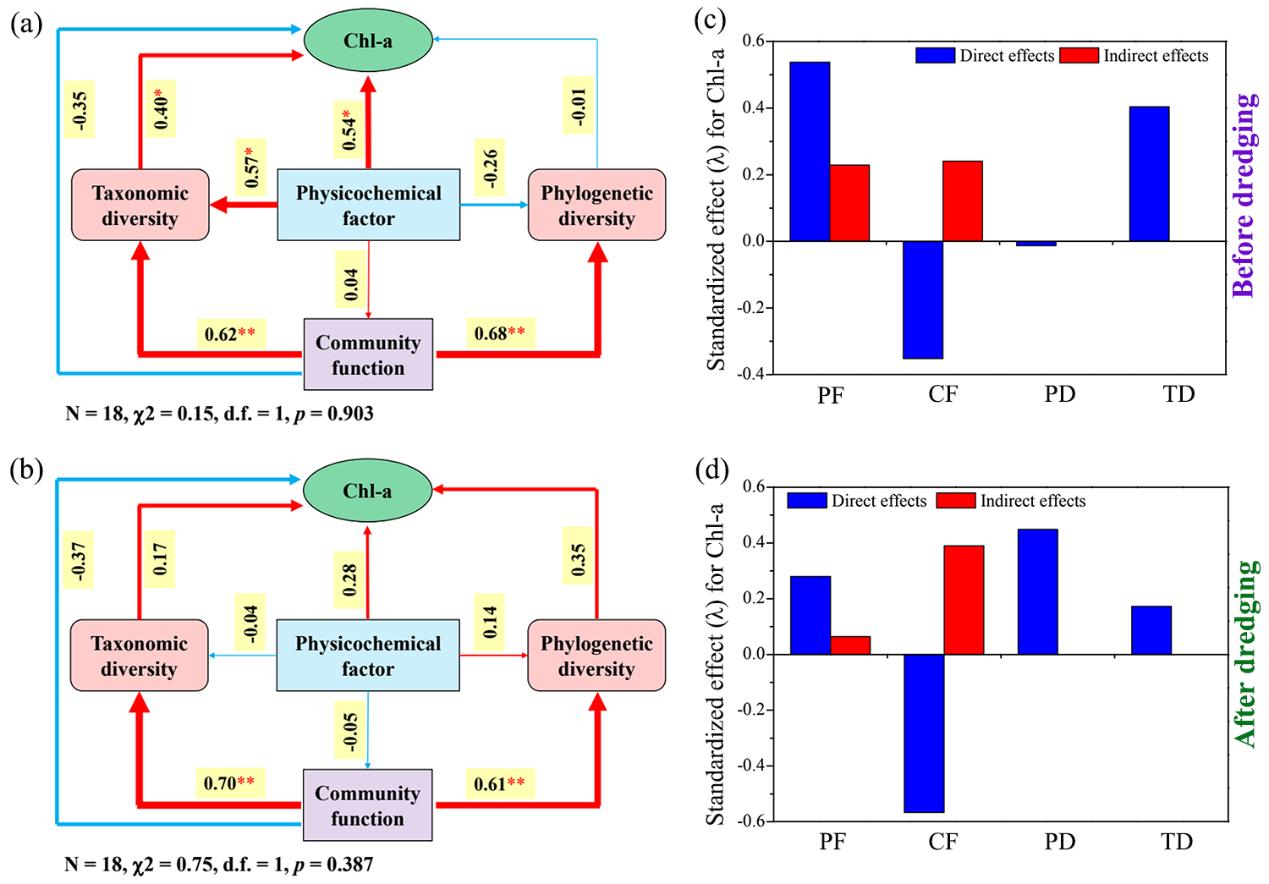
Excessive levels of nitrogen and phosphorus in lake waters can easily cause eutrophication of water body, which in turn leads to cyanobacteria blooms and threatens aquatic biodiversity. As a measure of human interference, dredging can effectively alleviate cyanobacteria blooms, and thus plays an important role in improving lake water quality. Dredging can remove part of the nitrogen and phosphorus elements from the sediment to reduce the nitrogen and phosphorus content in the water body, however, the ecological mechanism behind the dredging for mitigating the cyanobacteria bloom is poorly understood.
Associate Prof. WAN Wenjie and Prof. YANG Yuyi from the Wuhan Botanical Garden of the Chinese Academy of Sciences (CAS), collaborating with Prof. Geoffrey Michael Gadd of Dundee University in UK and Prof. GU Jidong of the Guangdong Technion-Israel Institute of Technology, took Lake Nanhu in Wuhan, China as the research object, and determined bacterioplankton community composition along with water and sediment physicochemical properties before and after dredging.
They also evaluated environmental adaptation of bacterioplankton before and after dredging by applying some statistical analysis approaches.
According to the researchers, dredging can reduce the content of nitrogen and phosphorus in water bodies and sediments. After dredging, the taxonomic and phylogenetic α-diversity of bacterioplankton decreased, and it's the same with the contributions of taxonomic and phylogenetic α-diversity to the level of water eutrophication. Moreover, both the environmental breadths and the phylogenetic signals of bacterioplankton community decreased, indicating that the environmental adaptability of bacterioplankton decreased at the taxonomic and phylogenetic levels.
"Dredging may cause ecological drift, which in turn leads to an increase in the stochastic process of bacterioplankton community," said Prof. WAN.
In addition, the conflict between bacterioplankton (including competition and predation) and the overall function of the bacterioplankton community decreased. However, some special functions such as the utilization of nitrogen and phosphorus have increased.
The results emphasize bacterioplankton's response to environmental changes caused by dredging, with nutrient loss and ecological drift playing important role. Besides, the results reveal that dredging can weaken the relationships among the diversity and function of the bacterioplankton community, the level of water eutrophication, and abiotic factors.
These findings provide new insights for diversity maintenance of bacterioplankton in response to dredging disturbance, and may enrich the theoretical basis for the environmental policy of dredging measures to mitigate cyanobacterial blooms.
The research was funded by the National Natural Science Foundation of China and the Youth Innovation Promotion Association of CAS. The findings of this research have been published in Water Research with the title of "Dredging alleviates cyanobacterial blooms by weakening diversity maintenance of bacterioplankton community".

Structural equation models showing hypothesized causal relationships among components including Chl-α, taxonomic diversity, phylogenetic diversity, community function, and physicochemical factor (the first axis of principal component analysis based on the physicochemical factor matrix) before dredging and after dredging (Image by WBG)

86-10-68597521 (day)
86-10-68597289 (night)

52 Sanlihe Rd., Xicheng District,
Beijing, China (100864)

